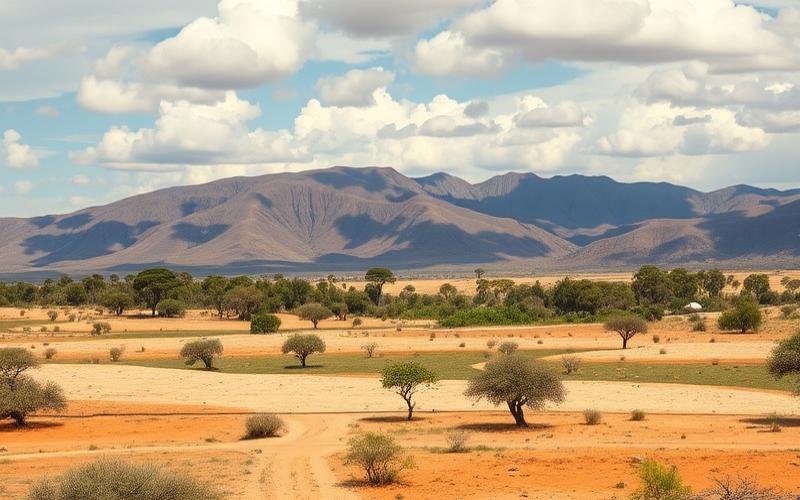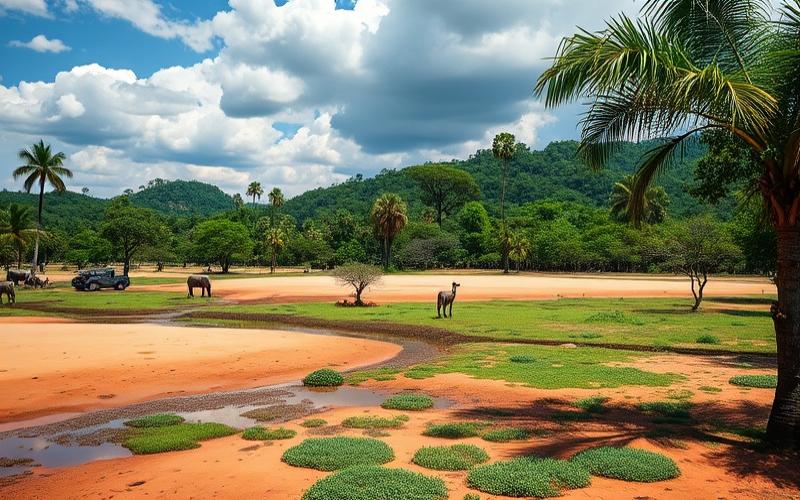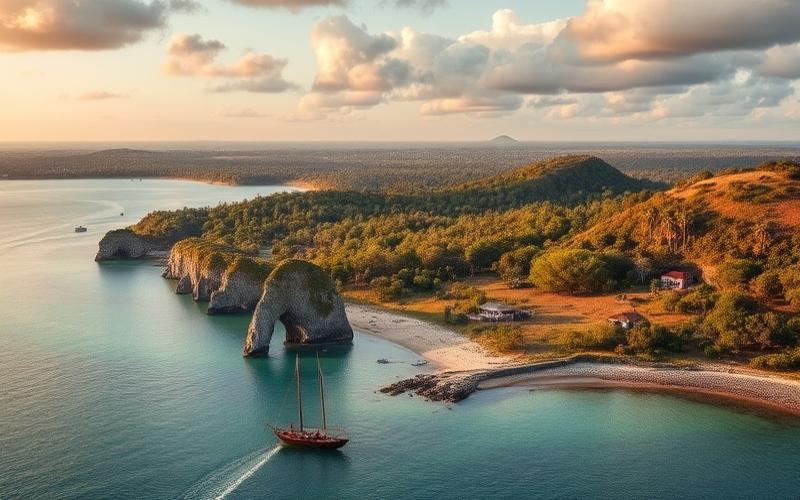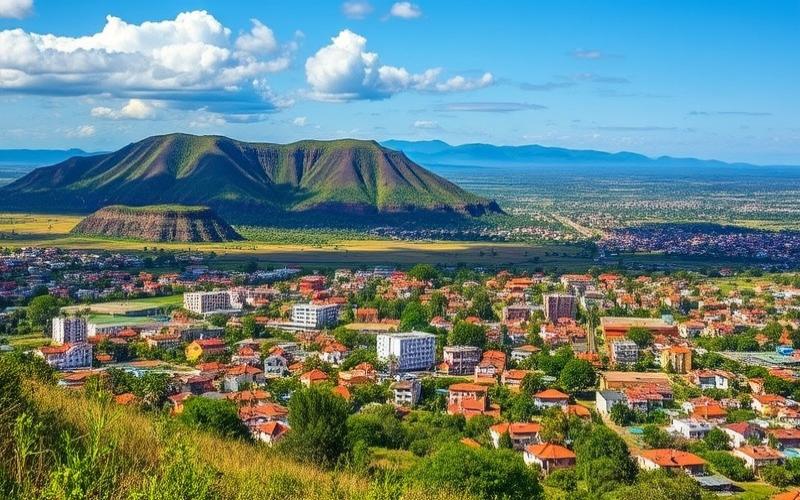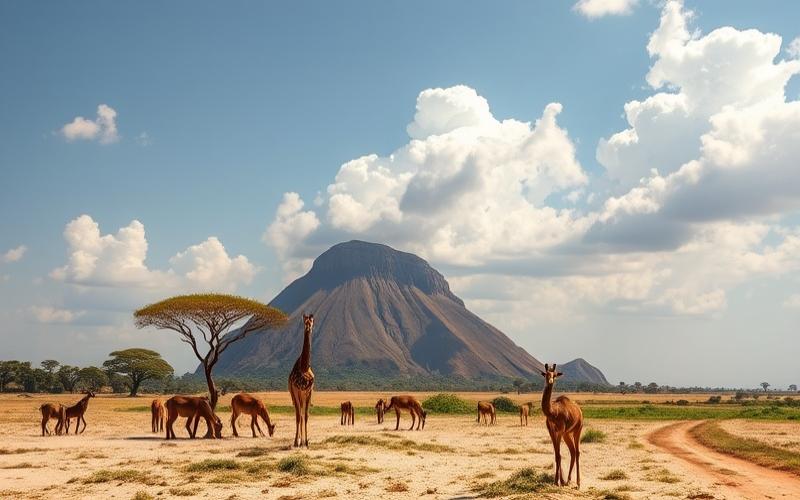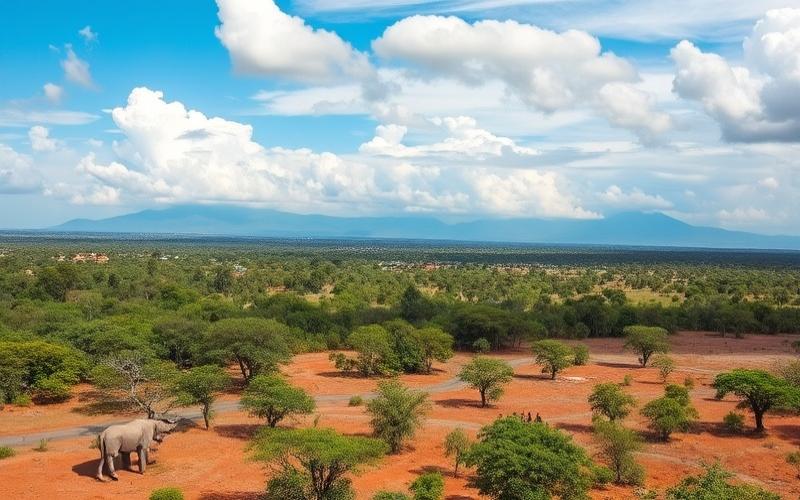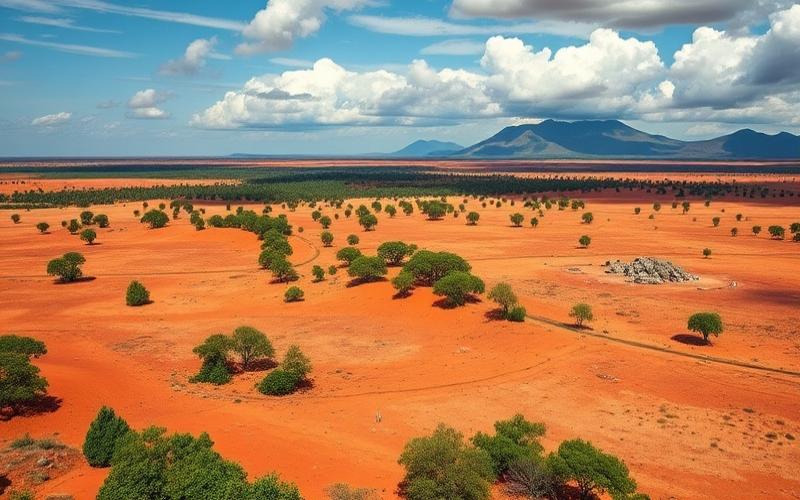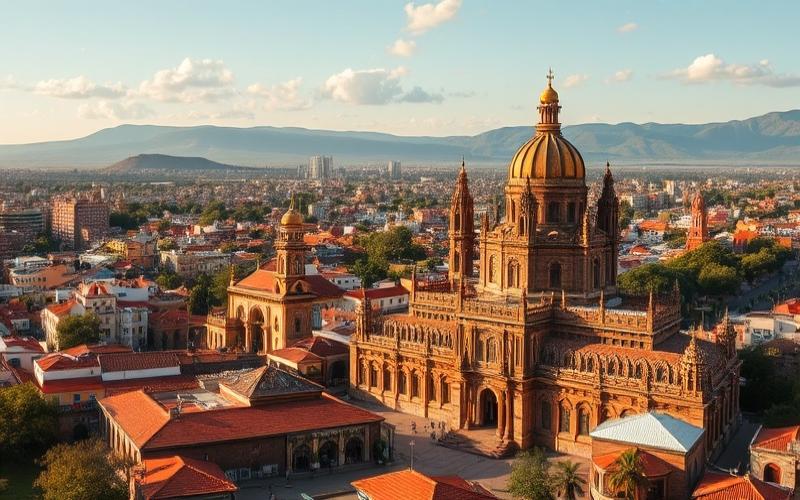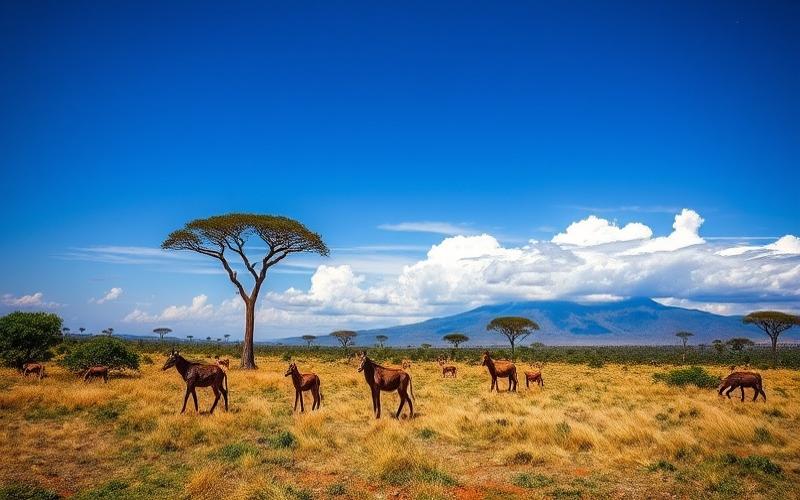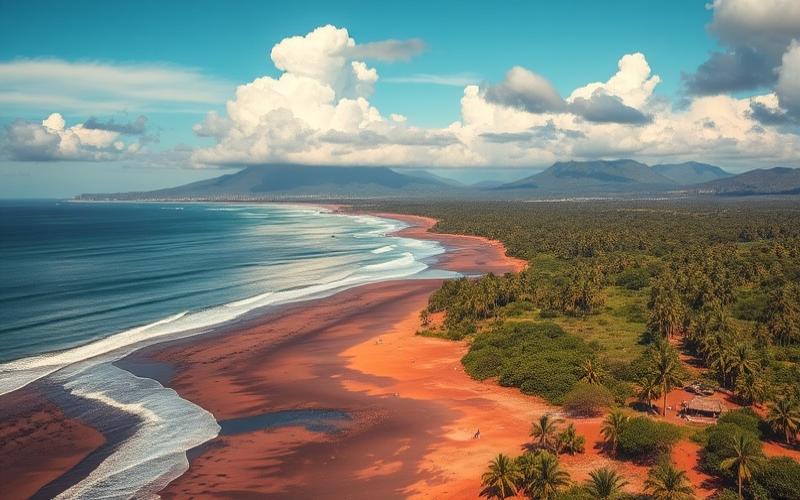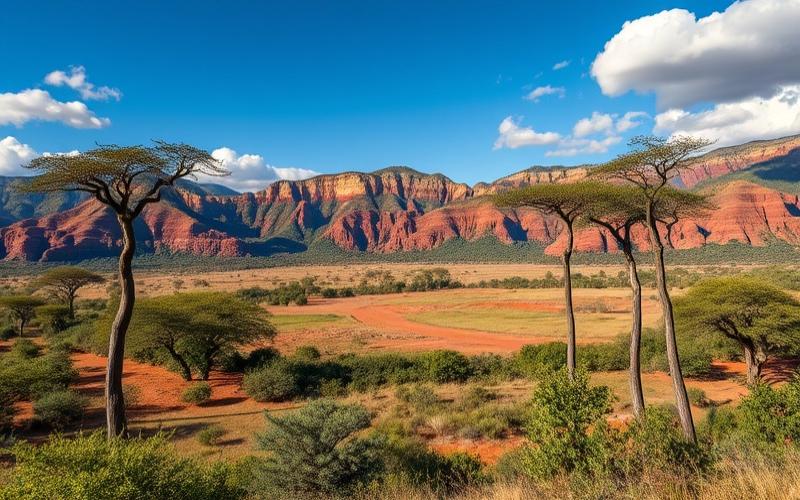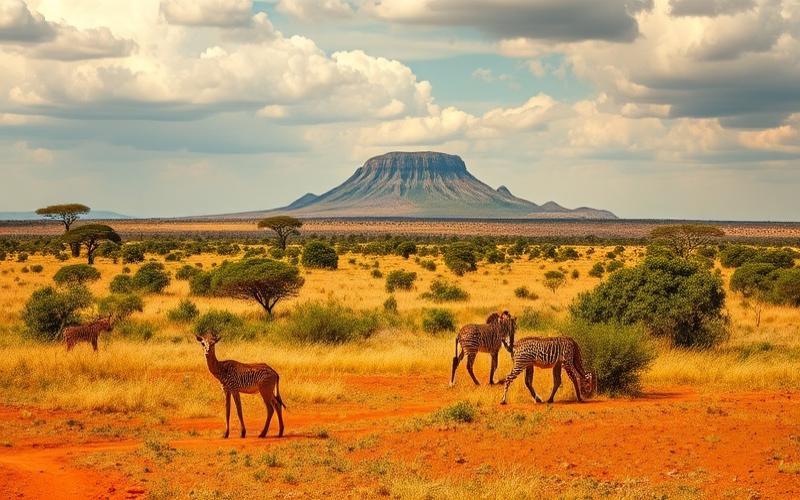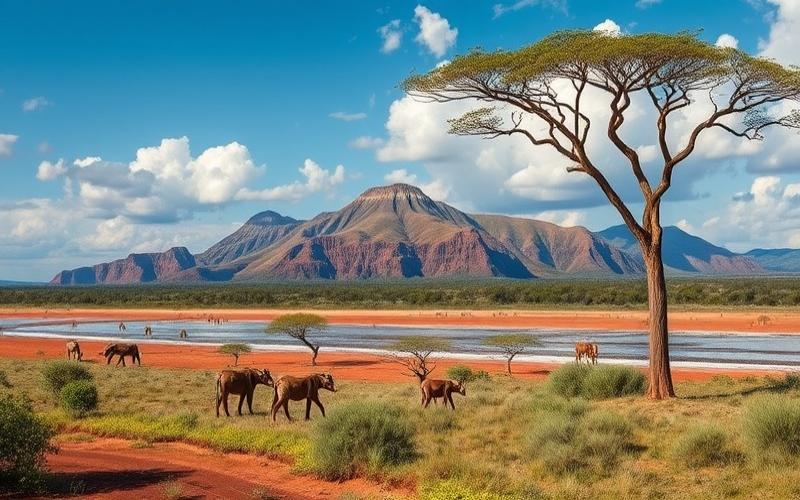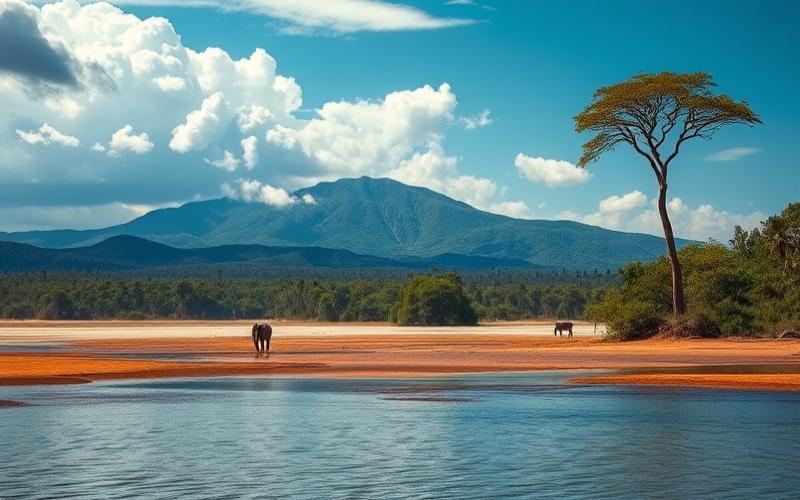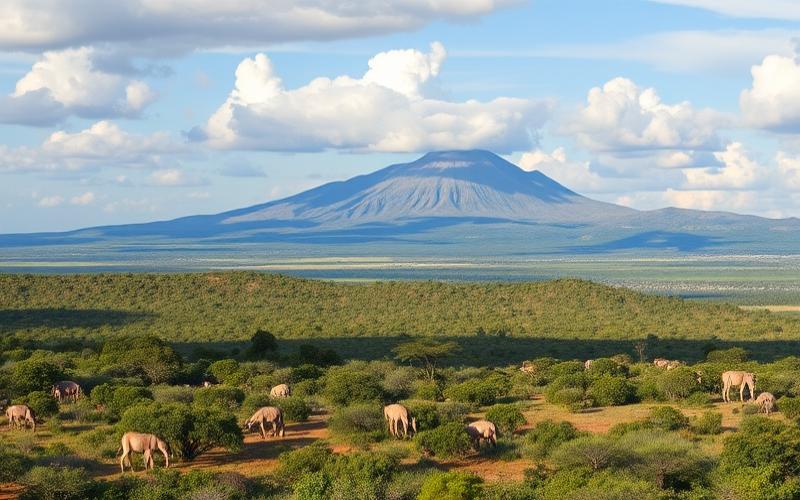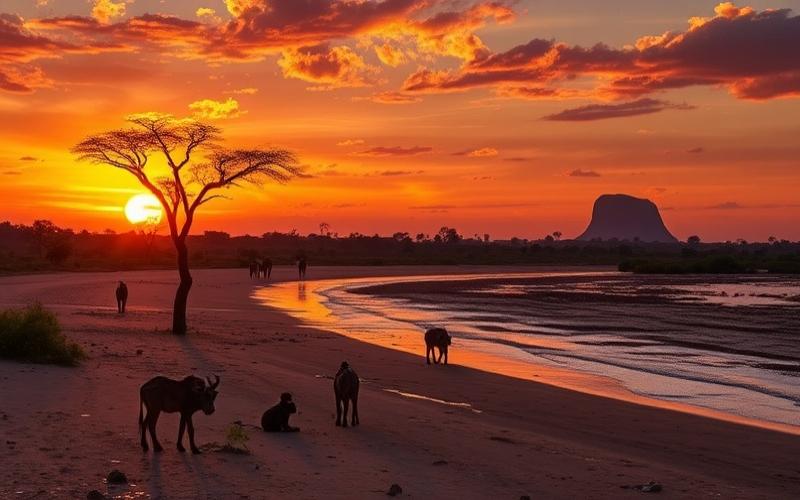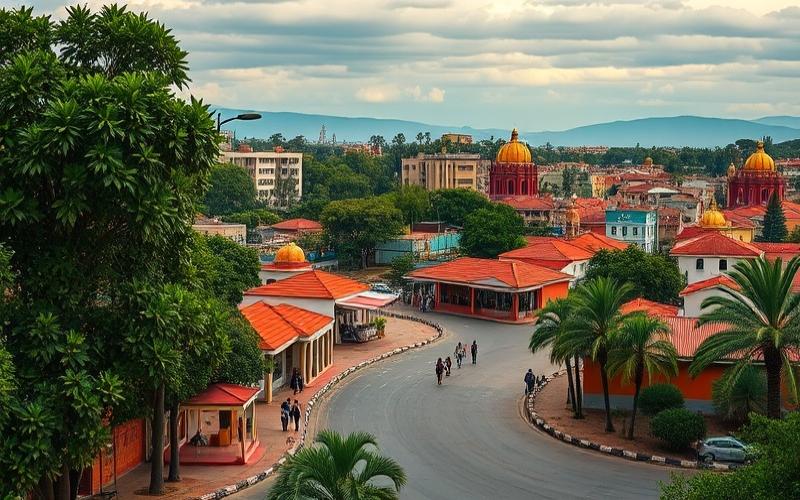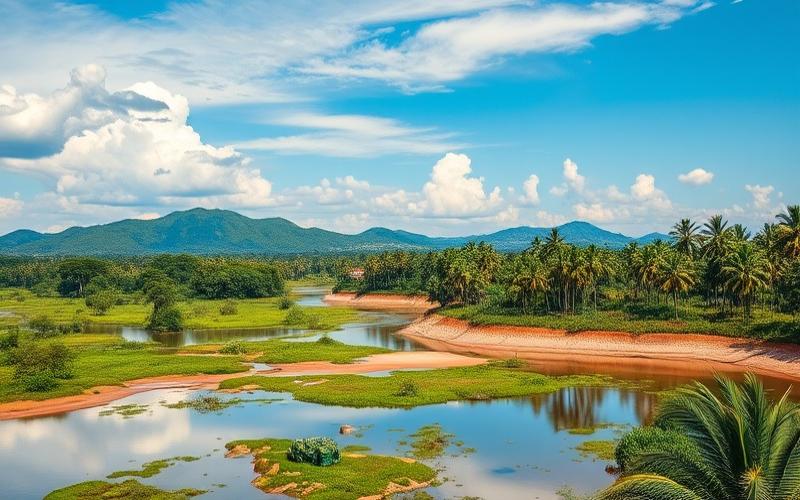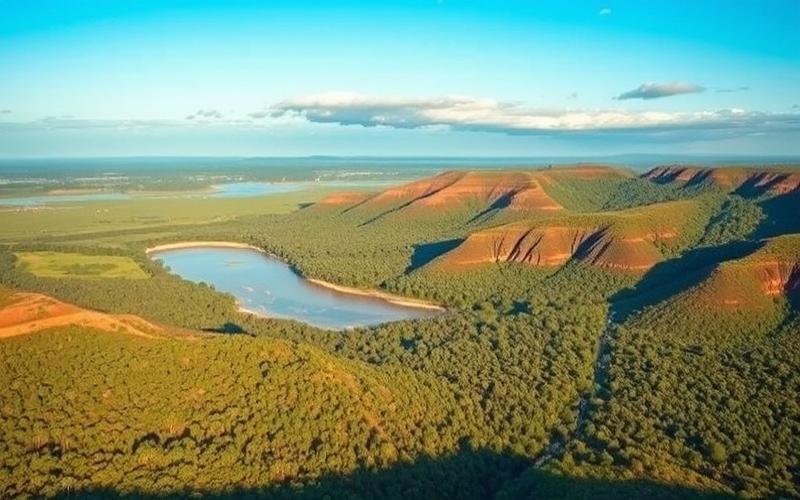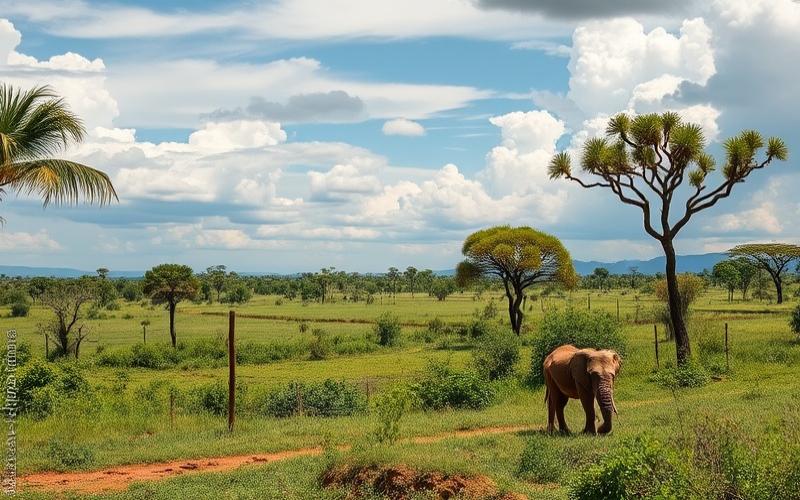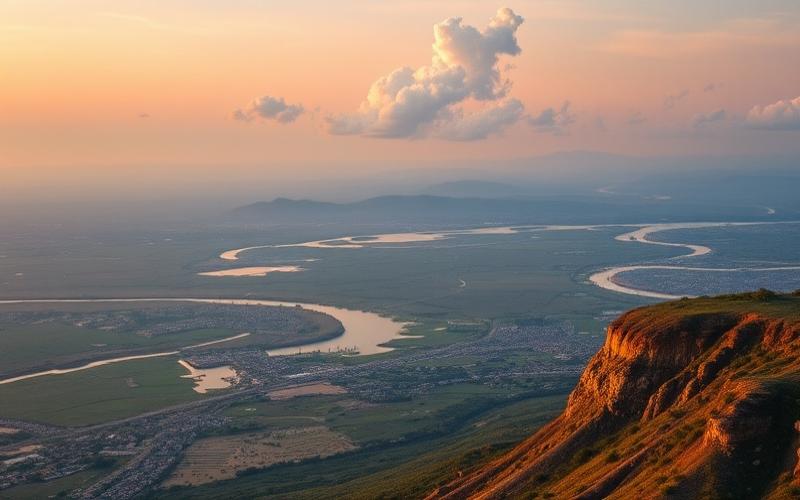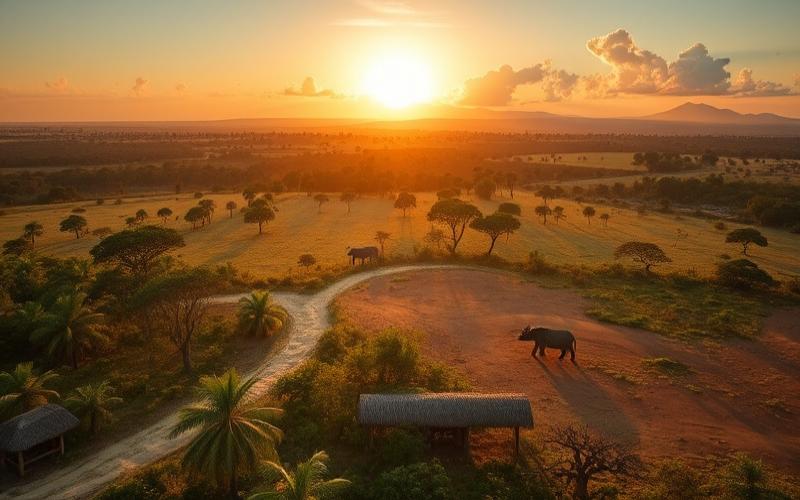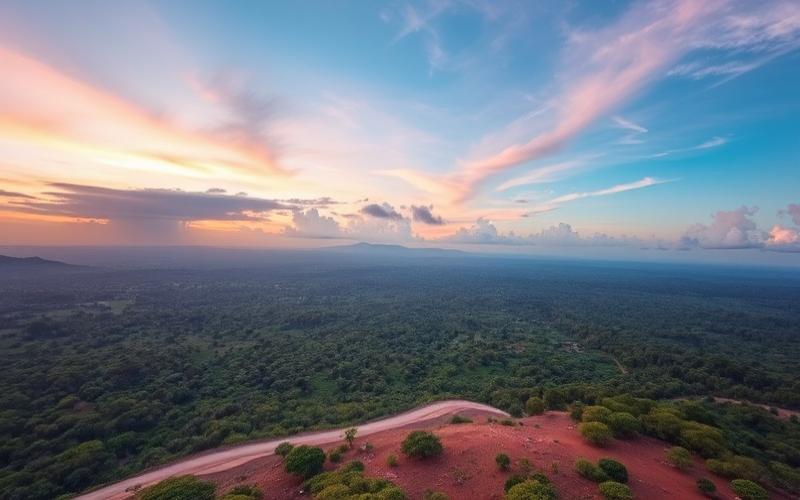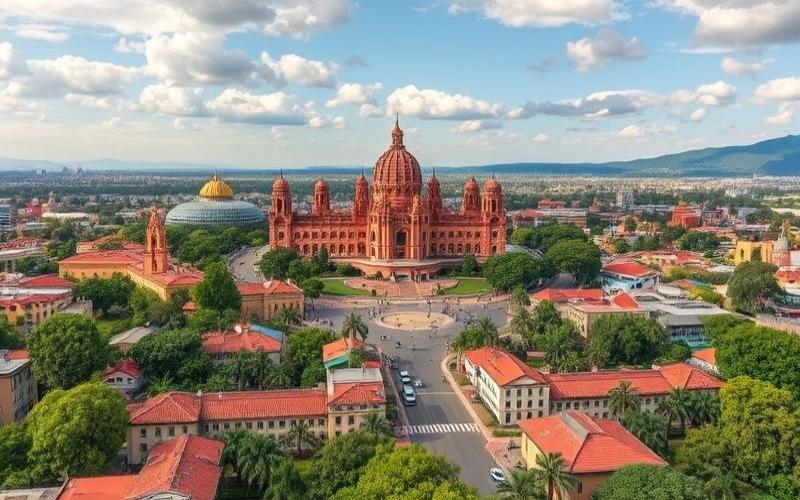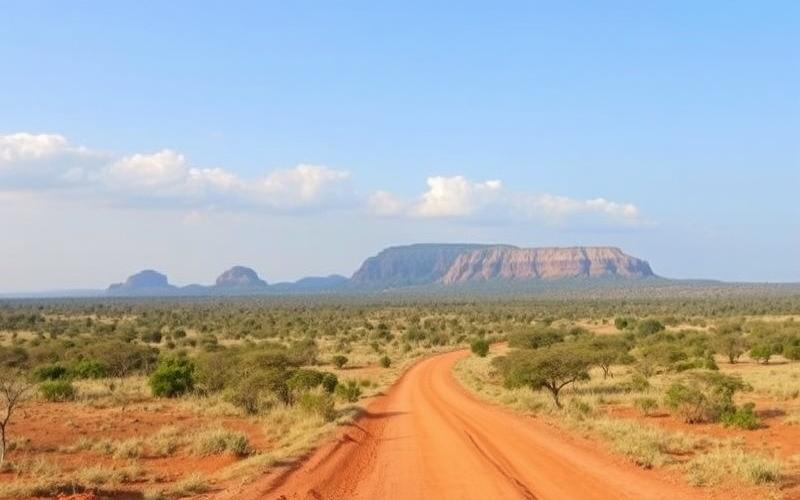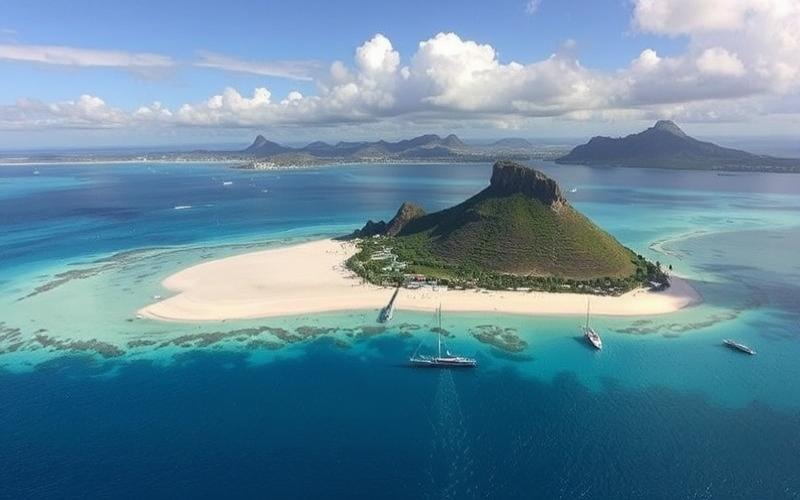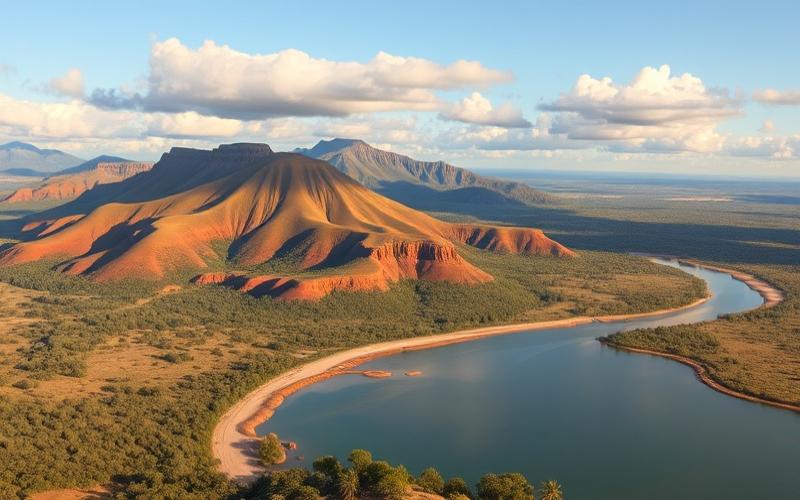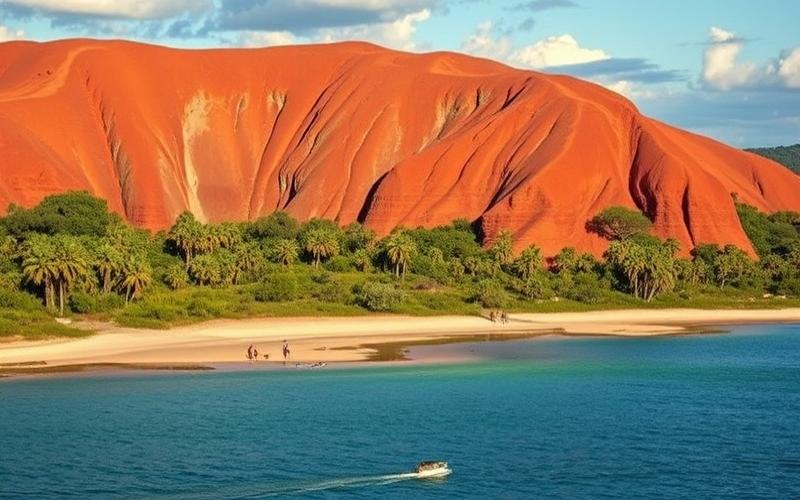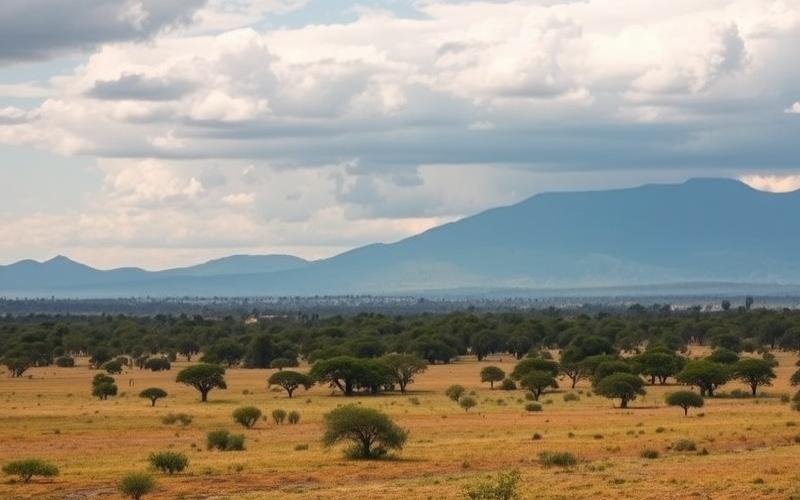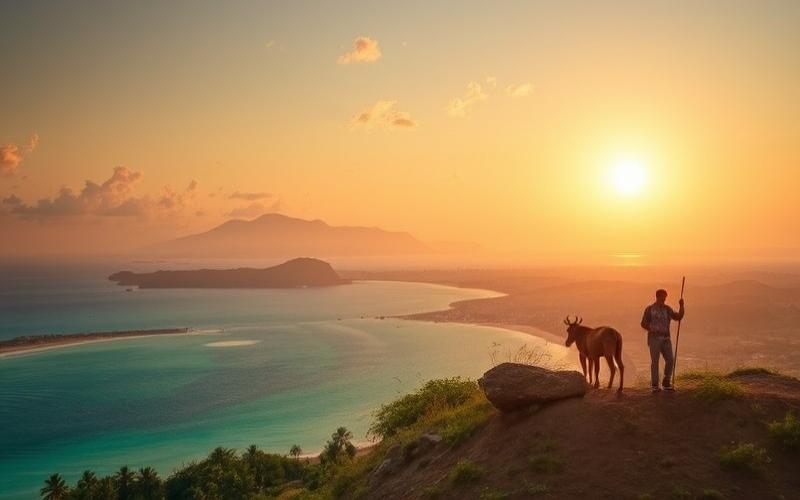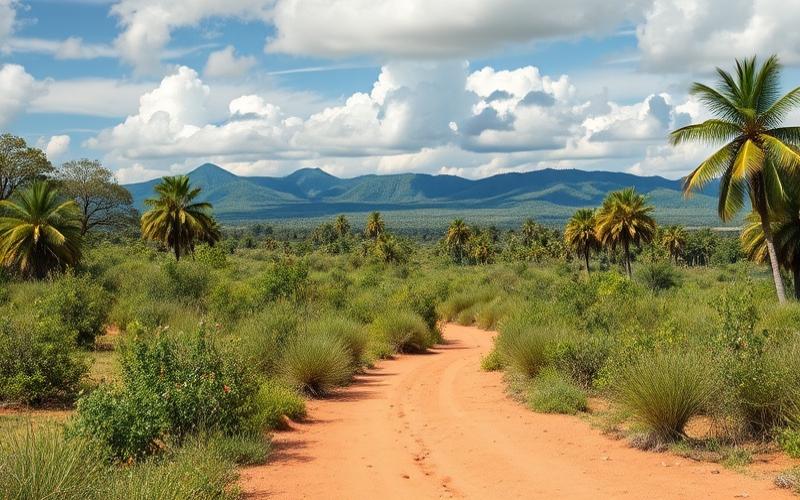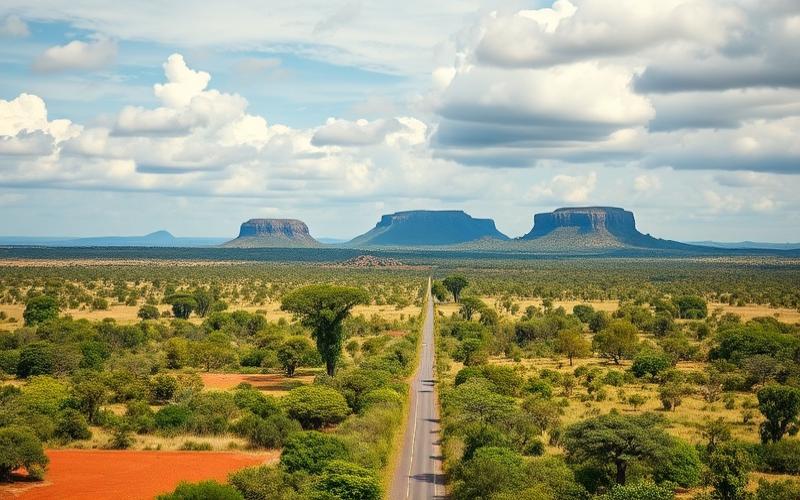
 Published on and written by Cyril Jarnias
Published on and written by Cyril Jarnias
In the Heart of the Indian Ocean, an Innovative Real Estate Trend
Madagascar continues to surprise with its dynamism and adaptation to global trends. The real estate sector is experiencing significant change with the rise of “co-living spaces.”
These shared living spaces respond to a growing demand for a more flexible and community-oriented lifestyle, particularly favored by young professionals and expatriates seeking to build connections while living economically.
Good to Know:
Never before have investment opportunities been so promising for visionary entrepreneurs looking to capitalize on this new trend, which combines innovation and friendliness at the heart of the Great Island.
Factors Driving the Growth of Co-Living Spaces in Madagascar
The growth of co-living spaces in Madagascar is explained by several interconnected factors reflecting the country’s demographic, economic, and social developments.
Population growth is a determining factor in the development of co-living in Madagascar. With an estimated population of 31,797,306 inhabitants in 2025, the country is experiencing a steady increase of 2.38% compared to 2024. This sustained demographic trend, maintained over several years, creates considerable pressure on housing infrastructure, particularly in urban areas where economic opportunities are concentrated.
Rapid urbanization and the migration of young adults to major cities like Antananarivo, Toamasina, and Mahajanga generate increased demand for affordable and flexible housing solutions. Faced with high urban real estate costs, co-living represents an economically viable alternative for this young and mobile population.
Economic Benefits of Co-Living
| Aspect | For Occupants | For Developers |
| Costs | Reduced expenses (electricity, water, internet) | Space optimization and increased profitability |
| Flexibility | Adaptable contracts without long-term commitment | More stable occupancy rates |
| Services | Access to shared premium amenities | Added value justifying competitive pricing |
| Investment | No significant furniture expenses | Economies of scale on furnishings |
Madagascar’s moderate but stable economic growth (4.2% in 2024 and forecast of 4.7% between 2025 and 2027) stimulates the service sector, particularly tourism and telecommunications. This dynamic favors the emergence of new accommodation models like co-living, which meets the needs of mobile professionals, entrepreneurs, and digital nomads.
Digitalization plays a crucial role in the growth of co-living. The liberalization of the telecommunications sector in Madagascar has improved internet access and facilitated remote work. Co-living spaces, typically equipped with reliable internet connections and shared workspaces, particularly attract digital workers who can balance professional and personal life in a community environment.
Evolution of Cultural Perceptions
Traditional Malagasy perceptions of living space are gradually evolving. While the extended family historically constituted the dominant shared housing model, younger generations are now adopting forms of cohabitation based on professional affinities or common interests rather than family ties. This transition reflects an adaptation of traditional community values to contemporary economic realities.
- Co-living spaces preserve certain community values while offering more independence
- Social acceptance of co-living increases with the visibility of successful projects
- Hybrid models incorporating Malagasy cultural elements are particularly successful
The COVID-19 pandemic paradoxically contributed to the growth of co-living in Madagascar. While health restrictions initially slowed the development of these spaces, the post-pandemic period saw increased demand for flexible and community living environments. Lockdowns highlighted the challenges of social isolation, leading many young professionals to seek housing solutions that promote social interactions while preserving personal space.
The Malagasy regulatory framework for co-living is still developing. Private investments increased in 2024, stimulated by reforms aimed at improving the business environment. These government initiatives, although not specifically targeted at co-living, create a favorable context for its development. Real estate developers benefit from tax incentives for innovative projects addressing urban housing needs.
“Co-living represents a pragmatic solution to urban housing challenges in Madagascar. Our community brings together local and international entrepreneurs who share not only a living space but also professional opportunities.” – Founder of a co-living space in Antananarivo
Local initiatives like “Tana Co-Living” in Antananarivo or “Beach Work Live” in Nosy Be demonstrate the viability of the model in different urban and tourist contexts. These pioneering projects combine residential spaces, shared work areas, and community programs adapted to Malagasy realities.
Persistent challenges like frequent power outages have paradoxically favored co-living, as these spaces are often equipped with shared alternative energy solutions (solar panels, generators), offering stability that individual housing couldn’t guarantee at equivalent cost.
Good to Know:
The growth of co-living spaces in Madagascar is driven by rapid urbanization and the influx of young adults to major cities seeking affordable and flexible housing. This lifestyle economically benefits occupants and developers by reducing housing costs and expenses, while digitalization facilitates work and community life, making this model attractive in a culture that values sharing. The COVID-19 pandemic reinforced interest in flexible housing, with local initiatives like “Colive” in Antananarivo demonstrating success and rapid adoption. Government policies are beginning to adapt to support this type of housing, thus simplifying the creation of new co-living spaces.
The real estate market in Madagascar is undergoing significant transformation with the emergence of shared spaces, responding to growing economic and social needs in a context of accelerated urbanization.
The growing asymmetry in the Malagasy real estate market is pushing players to innovate, with coworking and co-living spaces becoming solutions that bridge supply and demand. This trend is explained in particular by the need to offer affordable housing, a key element in meeting the country’s housing needs.
Roommate arrangements represent a particularly attractive formula, combining friendliness and profitability. This model fosters enriching interactions between tenants, attracting sociable and responsible individuals who contribute to creating a welcoming atmosphere.
Economic Benefits for Investors
| Type of Shared Space | Benefits for Developers | Benefits for Residents |
|---|---|---|
| Coworking | Optimization of commercial spaces, stable income | Reduced operating costs, networking |
| Co-living | Higher rental yields, maximized occupancy | Reduced housing costs, shared common spaces |
| Mixed Spaces | Diversified revenue sources | Integration of professional/personal life |
Innovative rental formulas allow investors to maximize their income. The choice between furnished or unfurnished housing depends on financial objectives: furnished units often attract tenants more quickly, while unfurnished housing offers more flexibility.
Challenges and Opportunities
- Need for sustainable and shared maintenance management
- Ecological management of residences and common spaces
- Adaptation of existing infrastructure to higher occupancy density
- Necessary evolution of the regulatory framework
Iconic Projects in Madagascar
Place Masay in Antananarivo perfectly illustrates this trend with its innovative project offering 200 apartments, offices, commercial spaces, and a wellness center, planned for 2023. This development on the shores of Lake Masay represents a new vision of integrated housing.
The Tanjombato Shopping Center, with its 4,000 m² of commercial space, also testifies to this evolution toward multifunctional spaces. Similarly, the Plaisance project in the capital’s center, with its 40,000 m² dedicated to offices and commerce, fits into this dynamic of shared and versatile spaces.
The Malagasy real estate market is thus gradually transforming, integrating innovative solutions that address contemporary challenges while creating new investment opportunities. Broker networks play a crucial role in this evolution, connecting independent agents who combine flexibility and local expertise to facilitate successful transactions in this new real estate paradigm.
Good to Know:
The rise of shared spaces in Madagascar is largely fueled by increasing urbanization and the search for affordable housing in rapidly expanding urban areas. These co-living spaces offer real estate developers economic opportunities by maximizing the use of limited urban land while meeting growing housing demand. For residents, co-living reduces housing costs while fostering enriching social interactions. However, this puts additional pressure on already strained urban infrastructure and requires adjustments in real estate regulations to integrate this new reality. In Antananarivo, for example, several co-living projects have emerged, illustrating an innovative response to the complex dynamics of the Malagasy real estate market.
Premium Co-Living for Young Professionals
Co-living in Madagascar represents an innovative housing solution gaining popularity among young professionals. This modern concept of community living hosts three or more biologically unrelated people living in the same housing unit while sharing similar values or intentions.
What is Co-Living?
Co-living is a community living model where residents have a private room in a furnished house while sharing common spaces. This formula falls between classic roommate arrangements (a few roommates) and dormitories (many residents), with the particularity of involving a third party to manage and operate these common spaces. In co-living buildings, tenants typically rent smaller rooms in larger apartments that they share with strangers. They have access to living rooms, kitchens, and other common areas, while services like cleaning, dog walking, and cooking classes are part of the offering.
Co-Living in Madagascar
In Madagascar, co-living is establishing itself as an economical alternative to dormitories, offering furnished rooms with individual leases and all-inclusive prices. This trend is particularly attractive to millennials looking for shared apartments. Whether you’re moving to Madagascar for work or simply looking for a new apartment, co-living represents an excellent way to save money while living with like-minded people.
The concept brings together people from different backgrounds and encourages them to interact, collaborate, and form new friendships. Compared to dormitories, co-living is much more attractive because it’s relatively inexpensive, all-inclusive, and allows renting a furnished room with an individual lease.
Attractive Features for Young Professionals
| Feature | Advantages |
| Shared Workspaces | Promotes productivity and professional exchanges |
| Included Services | Cleaning, maintenance, high-speed internet without administrative hassle |
| Curated Community | Integrated social and professional network |
| Contract Flexibility | Ideal for temporary assignments or exploring new opportunities |
| Value for Money | Access to premium neighborhoods and amenities at shared cost |
Co-living in Madagascar is perfectly suited for students, digital nomads, remote workers, young professionals, interns, and people moving to a new city for work. These spaces often offer modern amenities like integrated coworking spaces, meeting rooms, high-speed internet connection, and sometimes even concierge services.
Impact on the Local Real Estate Market
The emergence of co-living in Madagascar could gradually transform the local real estate market by introducing a new segment between traditional rental and hospitality. This trend responds to a combination of factors, including increasing urbanization rates, lack of affordable housing options, and growing interest in lifestyles not dependent on long-term contracts.
Future Prospects
Prospects for co-living in Madagascar appear promising, driven by the increasing digitalization of work and the island’s appeal to international remote workers. This formula could help revitalize certain urban neighborhoods by attracting a young, dynamic, and connected population, while offering a solution to urban housing challenges.
- Potential development in major cities like Antananarivo and Nosy Be
- Investment opportunities for local and international real estate developers
- Creation of an entrepreneurial ecosystem around these new living spaces
Co-living represents a modern response to the housing needs of young professionals in Madagascar, combining practicality, community, and contemporary lifestyle in a concept that continues to evolve to meet the expectations of new generations.
Good to Know:
The “co-living” concept in Madagascar is illustrated by premium roommate arrangements specially adapted for young professionals, combining sociability and functionality. These spaces are characterized by modern facilities, shared workspaces, and included services like cleaning or high-speed internet, thus meeting the expectations of professionals seeking a lifestyle combining comfort and networking. In Antananarivo, for example, residences like Le Condo or Horizon Living perfectly embody this trend by offering stimulating environments. This innovative model could energize the Malagasy real estate market by responding to the growing need for flexible housing for an increasingly mobile professional population eager to share experiences. According to a 2023 report, the co-living market saw 15% growth during the year, testifying to the popularity of these spaces. For Elyse, a young architect living in a co-living space in the capital, this trend represents “an opportunity to broaden professional horizons while living in a friendly setting.”
Digital Communities and New Lifestyle Trends in Madagascar
Co-living in Madagascar is experiencing significant growth, driven by evolving lifestyles and the needs of digital communities. This modern shared housing trend combines private and common spaces, offering an attractive alternative to traditional housing.
The Influence of Digital Communities on Malagasy Real Estate
Digital nomads and remote workers are gradually transforming the real estate landscape in Madagascar. These professionals seek flexible accommodation solutions that meet their specific needs. Co-living perfectly responds to this demand by offering spaces designed to facilitate both work and social life.
Co-living spaces in Madagascar particularly attract:
- Remote workers
- Digital nomads
- Young professionals
- Entrepreneurs
- Students
Characteristics of Co-Living Spaces in Madagascar
| Characteristic | Description |
|---|---|
| Housing | Furnished private rooms with individual lease |
| Common Spaces | Equipped kitchens, living rooms, coworking spaces |
| Services | All-inclusive (internet, electricity, water) |
| Financial Benefits | Economical alternative to traditional apartments |
| Social Aspect | Environment fostering interactions and collaborations |
Factors in Co-Living Growth
The growing popularity of co-living in Madagascar is explained by several converging factors. The high cost of living in urban areas pushes many people to seek affordable alternatives. By sharing spaces and common facilities, residents can significantly reduce their rent, utility, and maintenance expenses, making urban life more accessible to limited budgets.
The global co-living market was estimated at $7.82 billion USD in 2024 and is expected to grow at a CAGR of 13.5% from 2025 to 2030.
Resident Profile and Community
Co-living spaces in Madagascar bring together people from diverse backgrounds, encouraging interaction, collaboration, and the formation of new friendships. This community dimension constitutes a major attraction, particularly for millennials and Generation Z who value experiences and relationships more than material possessions.
Typical residents are:
- People moving for work
- Early-career professionals
- Digital entrepreneurs
- Students seeking an alternative to dormitories
Benefits of Co-Living for the Digital Ecosystem
Co-living offers an intelligent solution that combines private and community life. Whether you prefer a private room to focus on your projects or thrive in a shared space, co-living options in Madagascar adapt to all preferences.
In a typical configuration, you’ll have your own private bedroom and bathroom, as well as access to shared living spaces such as fully equipped kitchens, living rooms, coworking spaces, and even entertainment facilities like gyms or game rooms.
Urbanization and Real Estate Pressure
With increasing migration to cities in search of better job opportunities, education, and quality of life, the demand for housing in urban centers often exceeds supply, leading to soaring rents and real estate prices. For young professionals, students, and early-career individuals, finding affordable housing in prime urban locations represents a considerable challenge.
Co-living addresses this issue by allowing residents to share costs while accessing desirable locations close to work, educational institutions, and cultural centers.
Good to Know:
In Madagascar, digital communities play a key role in the rise of “co-living spaces,” partly thanks to digital technologies and social networks that facilitate their promotion and adoption. Remote work, freelancing, and digital entrepreneurship are emerging lifestyle trends that stimulate demand for shared and collaborative spaces, offering benefits like resource sharing, cost reduction, and a strong sense of community. These changes are observed, for example, in projects like Smartspace in Antananarivo, which mainly attracts young professionals and entrepreneurs seeking to combine professional life and a dynamic social setting. Typical residents of these spaces choose co-living for its flexibility and networking potential, thus influencing residential preferences toward more innovative solutions adapted to modern lifestyles.
Disclaimer: The information provided on this website is for informational purposes only and does not constitute financial, legal, or professional advice. We encourage you to consult qualified experts before making any investment, real estate, or expatriation decisions. Although we strive to maintain up-to-date and accurate information, we do not guarantee the completeness, accuracy, or timeliness of the proposed content. As investment and expatriation involve risks, we disclaim any liability for potential losses or damages arising from the use of this site. Your use of this site confirms your acceptance of these terms and your understanding of the associated risks.

